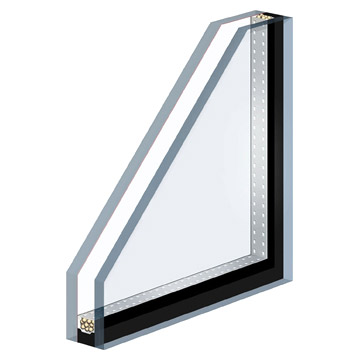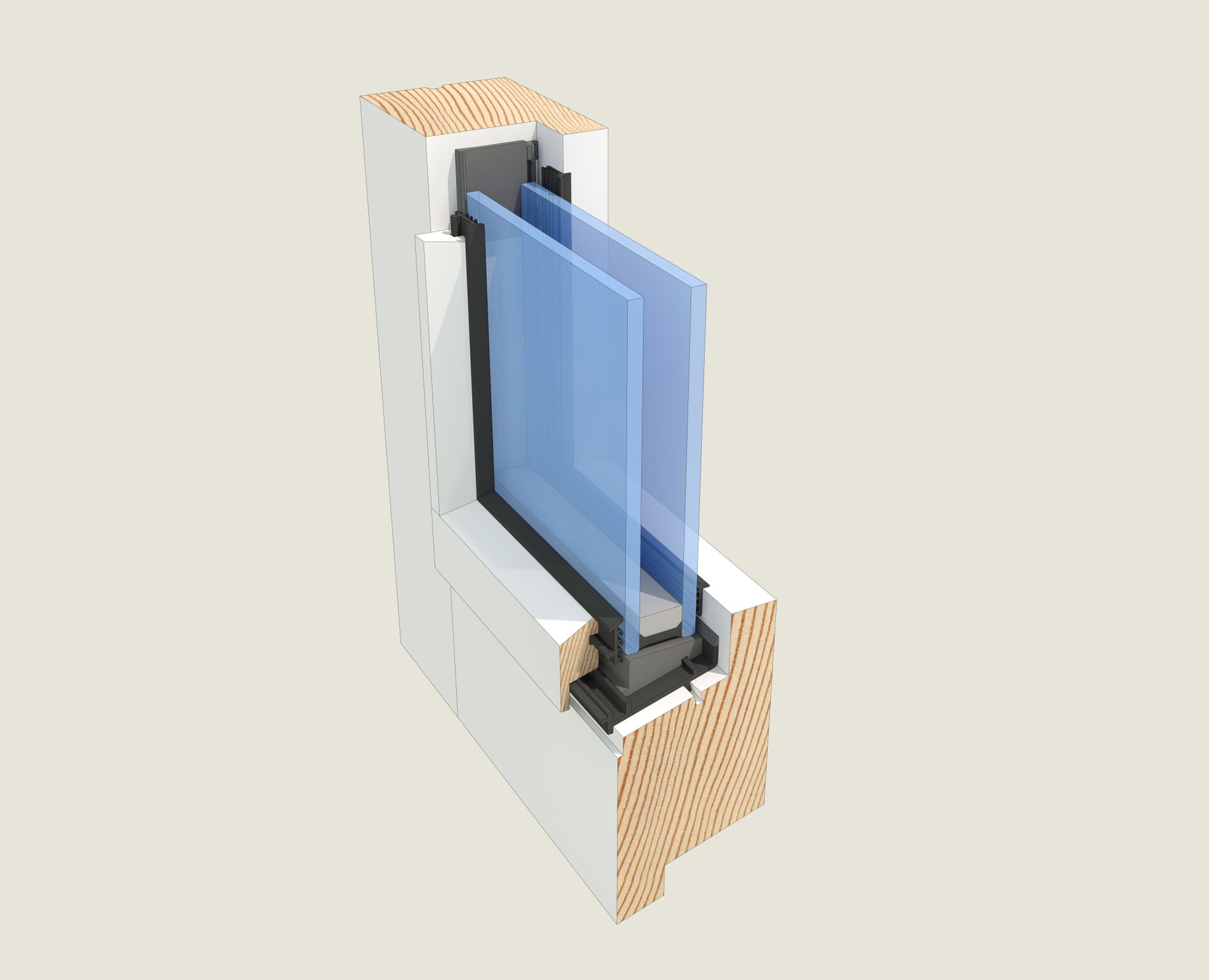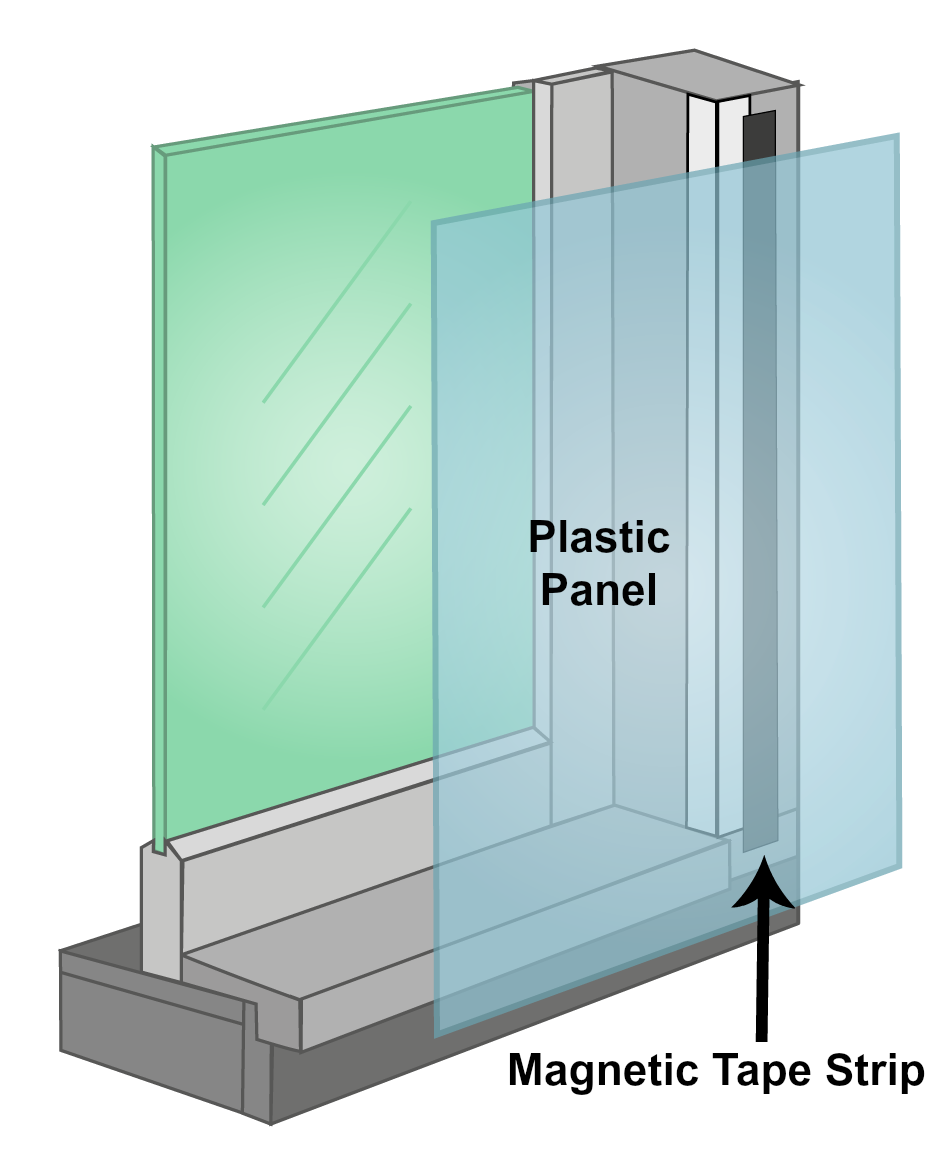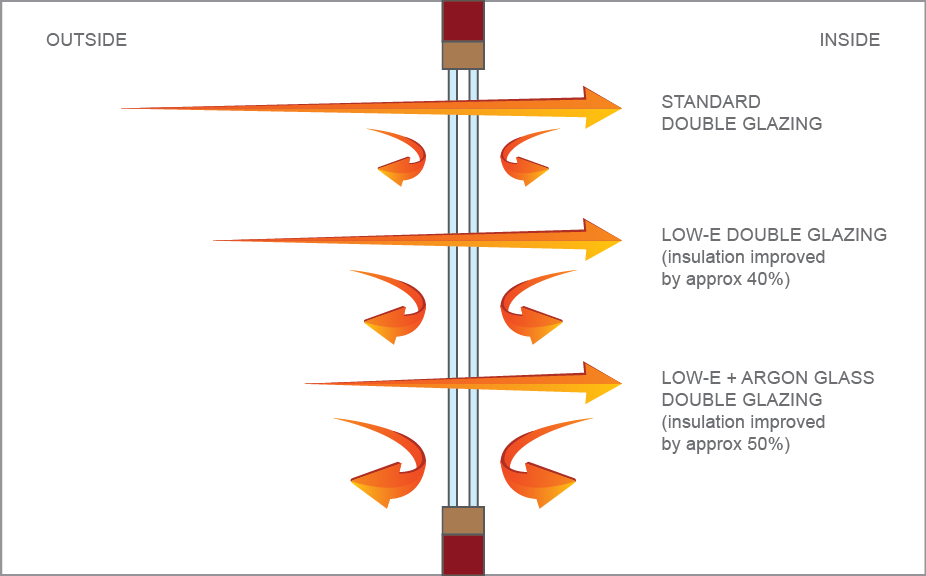With double glazing, two panels of glass are used rather than only one to create an insulated glass unit, or IGU. The two panels are separated by a small space, between 6mm to 18mm, which can be filled with an insulating gas such as argon.
What is double glazing?

The use of two panels as well as the hollow space help to dramatically increase the insulating power of a window, thus reducing heat loss in the winter and diminishing unwanted solar gain in the summer. Depending on the right glass selection.
On average, a home experiences from 21 to 31 percent heat loss through a standard one-panel single glazed window. By increasing thermal resistance with double glazing, you’ll require less energy to keep your home comfortable, which means lower energy bills.
The extra insulation also helps to improve the acoustics in your home or commercial space by insulating against some of the sound waves that would otherwise enter from outdoors. For those living in urban areas, the noise reduction benefits make double glazed windows even more attractive.
Double glazing also increases the safety and security of the home. Two glass panels are more difficult to breakthrough. Also, when upgrading your windows, you can choose a security glass that is much harder to penetrate.
Double glazing can be installed with Low E glass for even better energy efficiency, as well as a reduction in glare, thus reducing UV damage to your indoor furnishings.
This window solution has become popular in recent years with the rise in energy prices and increasing concern over sustainability. Simply by updating your windows, you can save money and take a positive step in the direction towards a more sustainable future.
New double glazed windows does, however, have its limitations. The biggest one is cost. This is the most expensive way to improve the energy efficiency of your home through your windows. The cost will depend on the number of windows you plan on replacing, as well as the quality of the glass you choose to use. In general, expect to pay three times the price of retrofit double glazing and secondary glazing.
This higher price is what leaves many property owners wondering if double glazing is worth it. Is it a better option than the alternatives to justify the thousands more that it will cost?
Surprisingly, the answer is no.
Double glazing does have more benefits than secondary glazing but retrofit double glazing offers the same desirable features of a new double glazed window solution – insulation, noise reduction, safety, and glare – without the high price. And without one other major drawback of new double glazed windows. The potential for moisture build-up.
What property owners don’t realise when they have new double glazed windows installed is that in many cases, the design doesn’t allow for water to evaporate quickly enough. An IGU must have proper drainage built-into the glazing system. Otherwise, eventually, water vapour will start to cloud the space in between the two glass panels. This makes it possible for mould to grow. Prolonged exposure to water or saturated water vapour within the glazing rebate is the number one reason for seal failure in IGUs. This can, unfortunately, lead to expensive repairs.
Another common problem with new double glazed windows is simply the fact that the whole frame of your existing window has to be removed. This means the cladding, internal lining, and other components of your home’s structure can be harmed in the process. It’s always important to have a highly skilled team install your double glazed windows to ensure your window solution doesn’t cause more harm than good.
What is retrofit double glazing?
With retrofitting, your current single glazed glass is replaced with double glazed IGUs. Instead of removing the entire window structure and replacing it, your existing window structure remains in place and the single pane of glass is replaced with a double glazed system.

As a result, with retrofitting you can enjoy all the advantages of double glazing because you are getting the same high-quality IGU. For those living in bustling cities or who rely on an air conditioner and indoor heater to regulate the interior environment, a window conversion can immensely improve the comfort and quality of indoor living and working spaces.
Retrofitting is also just as effective at enhancing security and protecting your furnishings from UV damage, all for a fraction of the cost of new double glazed windows. Retrofit double glazing is a less obtrusive process and it doesn’t require a lengthy, complex new window replacement. This means, it doesn’t require as large of an investment as new double glazed windows – yet it will increase the value of your home just as much, or more.
Homebuyers and property investors lookout for features that indicate durability and long-lasting functionality.
Also, because you won’t have your current windows torn down, you’ll be able to retain the original character of your windows. This is why Thermawood retrofit double glazing is often used in heritage buildings.
While other retrofitting window conversion services may not have this benefit, with Thermawood, you’re also less likely to face problems with moisture accumulation in your IGUs. Thermawood uses a patented dry double glazing system. We created a system that ensures complete drainage from the glazing rebate to help our windows and doors withstand even extreme environments. Designed specifically for existing timber windows, water and water vapour is able to evaporate or escape, diminishing the risk that condensation will damage the wood and prevent the double glazing from failing.
This not only helps to preserve the integrity of your windows, it also improves the air quality within the home.
The only drawback of retrofitting is that it can’t be performed on all types of existing windows. A Thermawood retrofit double glazing system can only be installed on your current wooden windows. Another drawback is that some companies have started to market their services as retrofit double glazing, even though what they are actually using is secondary glazing. You may believe you are getting the benefits of retrofitting without realising the superior features you are missing by having secondary glazed windows, not double glazed.
Secondary glazing is a vastly inferior product. This is why it is so important to know the difference between these two types of window conversions.
What is secondary glazing?
The reason secondary glazing is incapable of offering anywhere near the insulation benefits of double glazing is because you’re missing two essential components of double glazing:
- No argon gas can be used to increase the insulation
- You can’t have high-performance glass-like Low E glass installed
With secondary glazing, what happens is an acrylic sheet is installed on the inside of your existing window, generally with magnets. There are still some insulation benefits, which means you’ll improve the energy efficiency of your property and enjoy windows with a better acoustic performance. However, the difference will not be nearly as much as what you’ll experience with double glazed or retrofit double glazed windows.

Because you can’t choose special glass panels, such as laminated Safety Glass, you also lose the enhanced safety benefits of double glazing.
Another issue with secondary glazing you should be aware of is the challenge that comes with sash windows. With secondary glazing, it is difficult to re-weight double-hung sashes. This is because the acrylic used in the process adds weight to the sash. To try and combat this problem, when someone does secondary glazing, they will install a panel over the entire window. You’ll have to remove this panel any time you want to open the window. This makes getting the ventilation you want a cumbersome process – not exactly what you expected when you invested money to improve your windows.
A final, very important limitation is the same flaw found in traditional double glazing. Even after you have your window enhanced with a secondary glazing, you may face problems in the future as moisture accumulates. Because of the way secondary glazing works, it is possible for condensation to form within the gap between the existing glass and the secondary glazing. This can be a major issue if you have a wooden frame. The condensation can drip to the bottom of the frame, eventually damaging the wood.
What is the difference between double glazing, retrofit double glazing, and secondary glazing?
Double glazing, retrofit double glazing, and secondary glazing are all solutions for improving the functionality of your windows. Windows are either replaced or retrofitted in order to make them more energy-efficient, to reduce noise from entering the home, as well as for other benefits like reducing glare and making a home less vulnerable to damage from the environment, or even from break-ins or accidents.
While the overall goal is the same for all three window and door solutions, each will achieve different results in terms of quality, sustainability, and even how many features can be addressed.
Also, each comes with its own level of flexibility. For example, with Thermawood’s retrofit double glazing, you can also choose to have specialised glass installed or to automate your windows for even greater energy efficiency and security.

Each option is available in a different price range:
- Generally, new double glazed windows are the most expensive option.
- Secondary glazing and retrofit double glazing are both much less expensive and come with a similar price range.
Where new double glazed windows and secondary glazing fail, retrofit double glazing succeeds. There is no reason to replace your timber windows with double glazed aluminium or PVC windows. Nor do you have to settle with secondary glazing as the only cost-effective option. In fact, a retrofit is both an effective and affordable solution.
Thermawood’s use of a unique, patented dry glazing system takes the work of window and door enhancement one step ahead of the rest by making it even harder for condensation to build-up, thus preserving the integrity of your existing timber windows for years longer than any other window solution.
When it comes to aesthetics, retrofitting wins again. When you are able to retain your existing timber windows, the original architectural integrity and character are preserved. The Thermawood Patented Double Glazing system is Unique to Thermawood and is available only through Thermawood Franchisees. All the products that the Thermawood franchisees use are designed and tested for the local market so you know it will work and work well.
This is not some system bought in from overseas and adapted to suit, there are worldwide patents on the Thermawood system giving the customer peace of mind they are getting a professional job done and their frames and double glazing will last the test of time.

[Free Guide]
The Most Comprehensive Guide
Available to You Anywhere

![What Are Double Glazed Windows? [What You Need to Know]](https://www.thermawood.co.nz/wp-content/uploads/2020/05/What-Are-Double-Glazed-Windows-1.png)